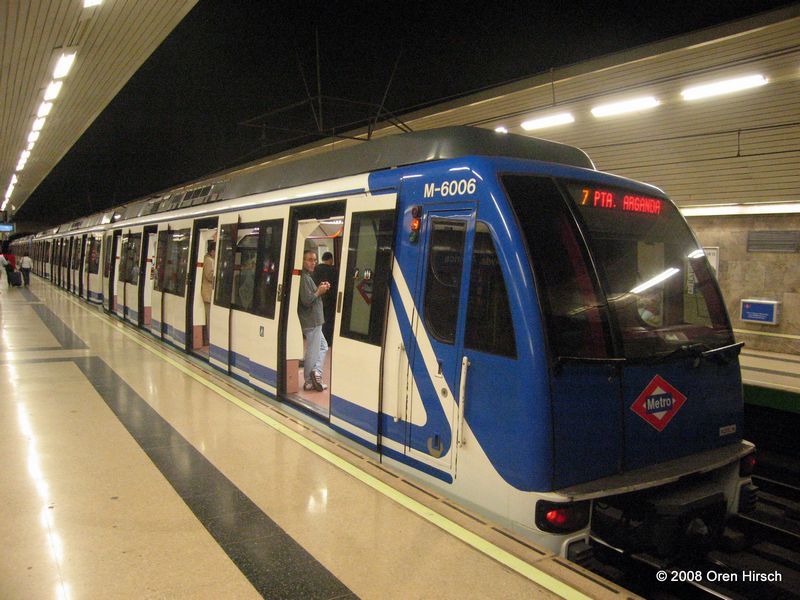Over the course of redesigning Oren’s Transit Page, I was also continuing to travel, take photos, and add them in to the queue to be included in the redesigned website once it launched. Now that the redesigned website is here, keep reading to find out what new material was added in conjunction with the redesign. This isn’t an exhaustive list but rather just the “highlights”, there is plenty of new content scattered around the whole site.

NABI 60-BRT 9574 on Main Street at Aliso Street
Los Angeles, CA
July 11, 2014
Starting off in the United States, I traveled to a number of places for the first time in my life in 2014. I made a Midwest swing in May 2014 that resulted in the creation of sections for Minneapolis-St. Paul (just prior to the Green Line opening) and Kansas City. After that, in July 2014, I did some long distance Amtrak travel (with some flights in between) and visited Los Angeles and San Diego for the first time. Also on this trip were stops in Denver (in time for the soft reopening of Denver’s Union Station), Chicago, and San Francisco. I had passed through Denver before but I had never used or photographed its mass transit prior to that summer. The stops in Chicago and San Francisco were my first in each city since 2007 and were quite brief, but there are new photos in those sections as well, including my first photos of the CTA 5000 Series cars.
The Washington, DC section now includes photos of some of the newer buses to ply the region’s streets, such as WMATA’s New Flyer XDE40 buses and Ride On’s Gillig Advantage/CNG buses. On the rail side of things, there is now a gallery for photos of the new WMATA 7000 Series railcars, manufactured by Kawasaki.

PCC 3263 at Capen Street
Milton, MA
May 2, 2011
I last traveled to Philadelphia in 2012 and was able to get a last round of Silverliner II and Silverliner III photos, in addition to my first Silverliner V photos. I made two trips to Boston, one in 2011 and the other in 2013. On the 2011 trip, I rode the southern end of the Orange Line for the first time, and both trips included a number of trips on the Green Line and Red Line. I also was able to get photos from along the Ashmont-Mattapan High Speed Line right of way and of various MBTA buses, including the trackless trolleys, in Cambridge. Finally, for the first time since Oren’s Transit Page’s initial launch over 15 years ago, there are new photos in the Atlanta section.
There are also new photos from New York City, but due to the immense size of that section, it was decided to leave it “as is” in the old format and add the new photos to the Uncaptioned Photos gallery for now. The New York section will be updated with the new design as soon as possible.
North of the border, there is a new section for photos from Niagara Falls, Ontario. My only trip to South America to date was in 2010 so there isn’t anything new in the Brazil and Argentina sections (while Buenos Aires is on my bucket list, I haven’t found the occasion to get myself down there just yet).
Crossing the ocean to Europe, I visited both Hungary and Portugal for the first time. My stop in Budapest was a layover between flights in 2011 that was measured in hours rather than days, but it was enough time to photograph some of the city’s trams, buses, and trolleybuses and whet my appetite for another trip there that will be longer 13 hours. I spent almost a full week in Lisbon, a city that shares many similarities to San Francisco including the fact that its trams are a tourist attraction in and of themselves, and visited continental Europe’s westernmost bus stop for good measure.

Bombardier Flexity Outlook “Cityrunner” 3069 at Place Royale
Brussels, Belgium
November 21, 2013
In 2008, I unexpectedly found myself with 90 minutes in Brussels due to a missed train connection, which was just enough time to get some transit photos before the next train to my destination came. In 2013, I was in Brussels yet again, this time for a full 8 hours between flights, so that section has seen some additional expansion including a new gallery for photos of the Belgian National Railway.
Finally, in the Middle East, the Israel section has expanded further and to my knowledge, Oren’s Transit Page’s Israel section is the largest of its kind on any English language website. The Jerusalem Light Rail opened to passengers just after I began the long process of overhauling the website, so many photos of revenue service along the length of the entire line are now included on the site. The Metronit bus rapid transit system in the Haifa region opened in 2014, and there are also photos of that. In addition, there are many new photos of the many bus operators that operate throughout the entire length of the country.
I hope you enjoy exploring the site, whether you choose to browse the new sections, old sections, or a mix of both! And if you have a favorite section, let everyone know what it is in the comment section below!
Mercedez-Benz OH 1718L-SB



